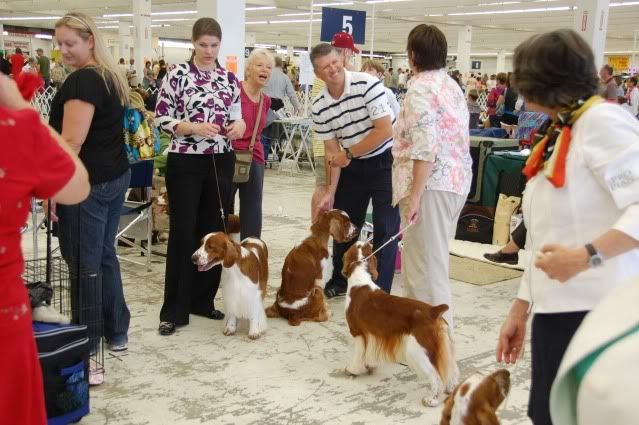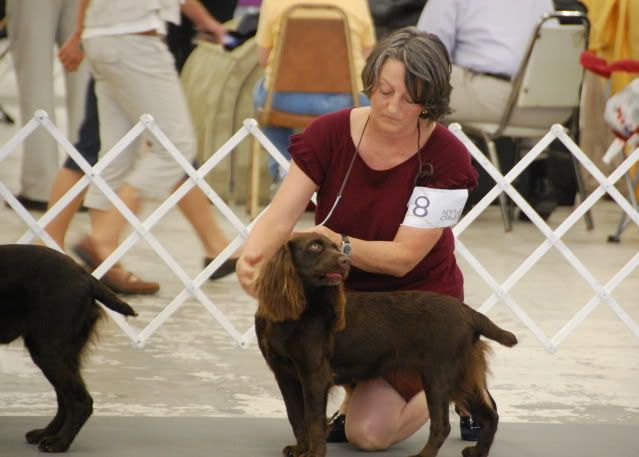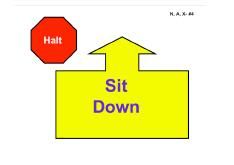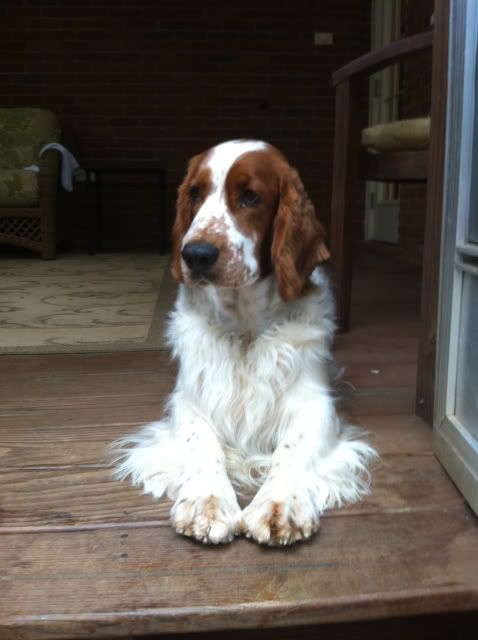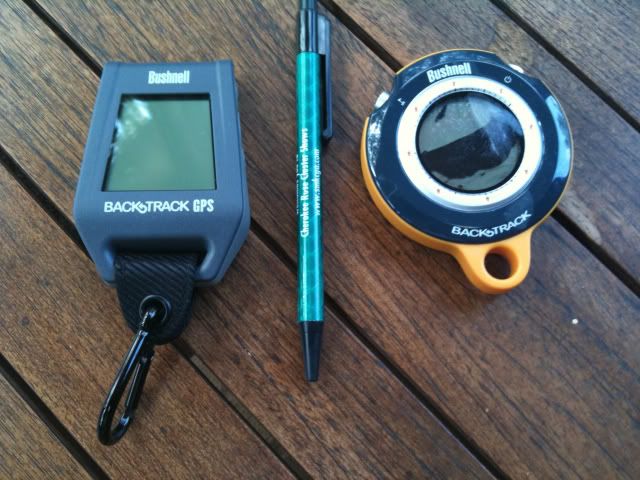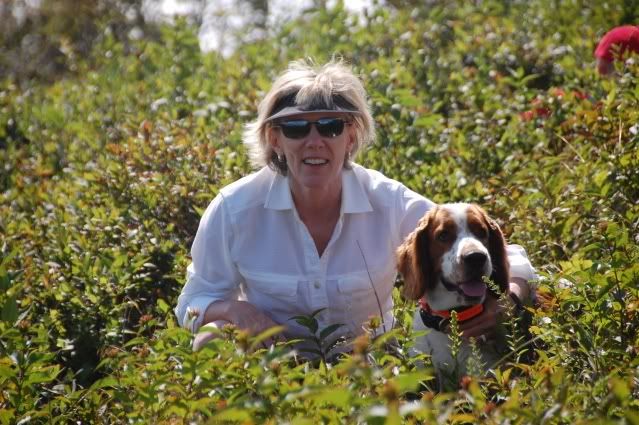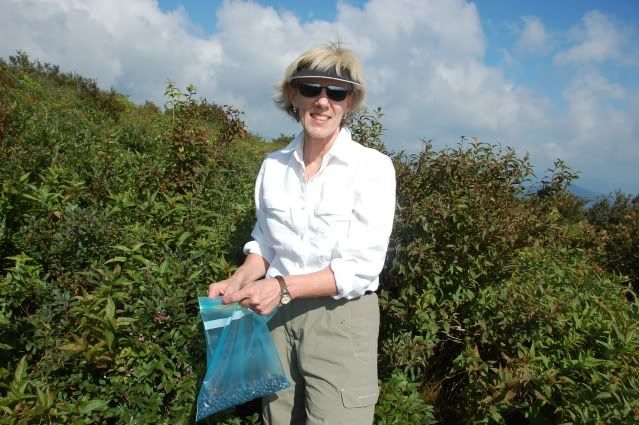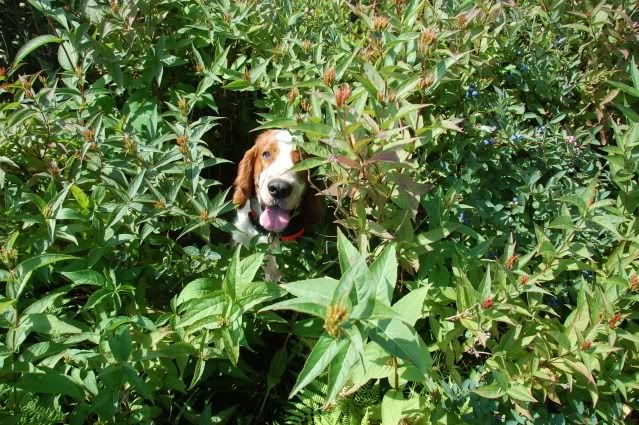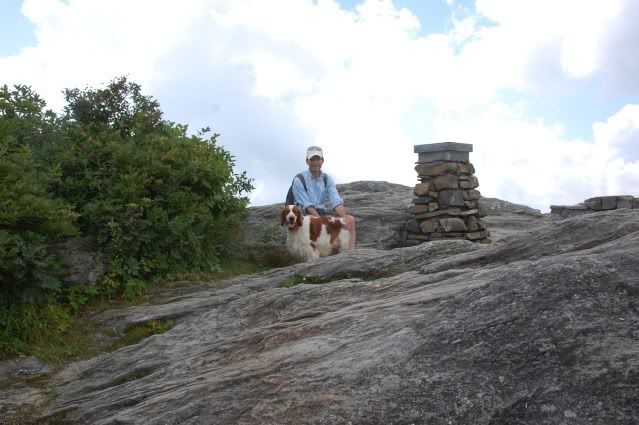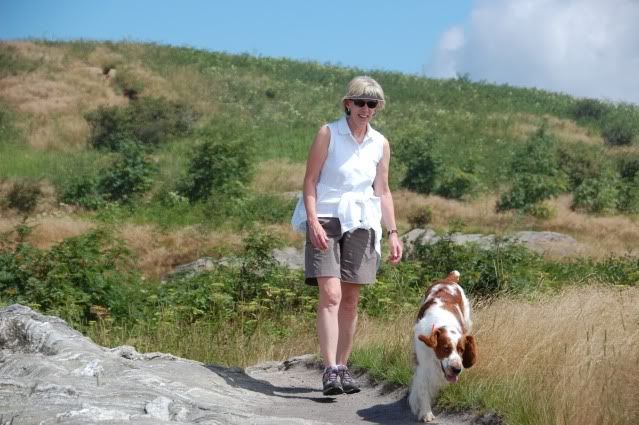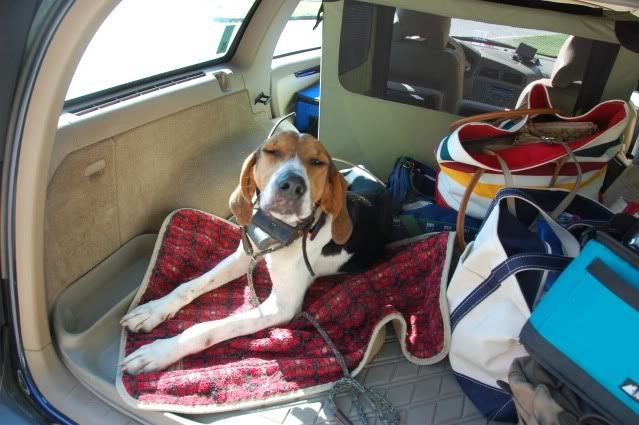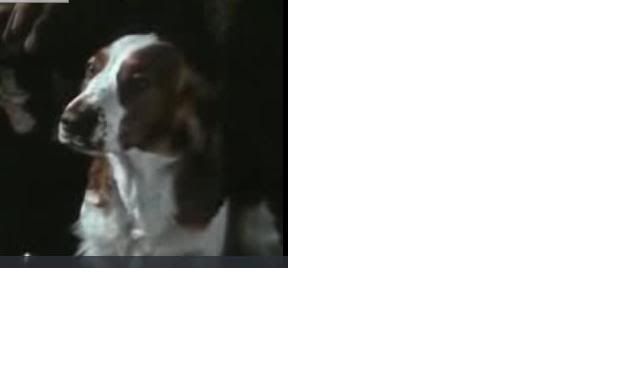Aki and I were driving along the Blue Ridge Parkway in the Pisgah Forest on Saturday and happened upon a scrawny and completely lost tan, black, and white dog.
I don't normally stop for lost dogs along the roadway, but this dog had at least two tracking collars, judging by the antenna. A lost dog with that sort of hardware was likely causing some heartache somewhere, or, worse, was a sign of a hunter in trouble.
We pulled over and walked to the dog. A sweet and gentle guy if there ever was one, and just skin and bones. Had he been lost for a month? Since we had Larsen and his dogfood in the car, I poured a bowlful for the lost boy, and he ate it like it was his first meal in a year. He ate while laying down, wagging his poor scrawny tail.
Happily, the dog had a collar with a phone number. Aki called, but without success, on both AT&T and Verizon's network. We loaded the pup into the back of the station wagon and headed back toward Waynesville hoping to get a signal.
We finally got hold of Blake, the young owner of Rock. Rock, it turned out, was a Treeing Walker Coonhound ("with papers"). It seems Rock got separated from Blake during the excitement of a bear hunt, and Blake had been tracking him when he could, which included all Friday night and into early Saturday. Blake said he had taken a few hours off to help his mom and aunt put the corn up, and when he went back to his tracking, he saw the signal was fading in and out and he knew that someone had Rock in his car. That was us.
Blake was polite enough to ask about Larsen, and recognized that Larsen was a bird dog of some sort. Blake offered that his bird-hunting friends had only about a dozen grouse to show for some very hard work during last fall's hunting season. He was not sure whether grouse would be up or down this year, but he thought that the birds had been dying out.
We parted ways--Blake and Rock off home to get fed (again) and kenneled. Aki and I resumed our drive toward our hike on part of the Art Loeb trail (around mile marker 420 of the Blue Ridge Parkway).
Kind-hearted Rock, the Treeing Walker Coonhound, thanks us for our hospitality on Saturday.




